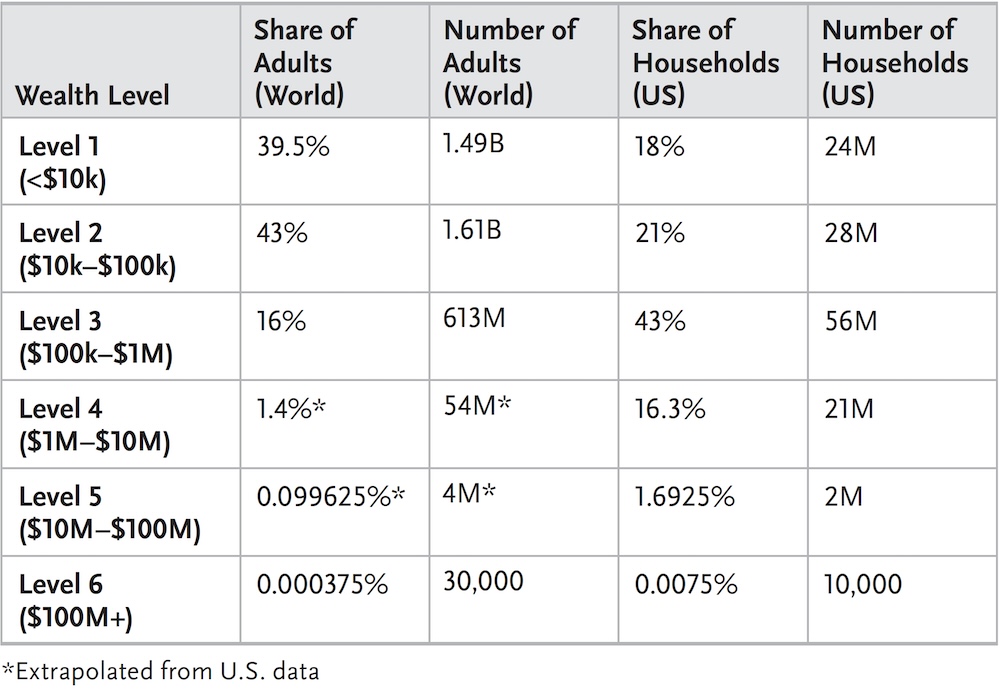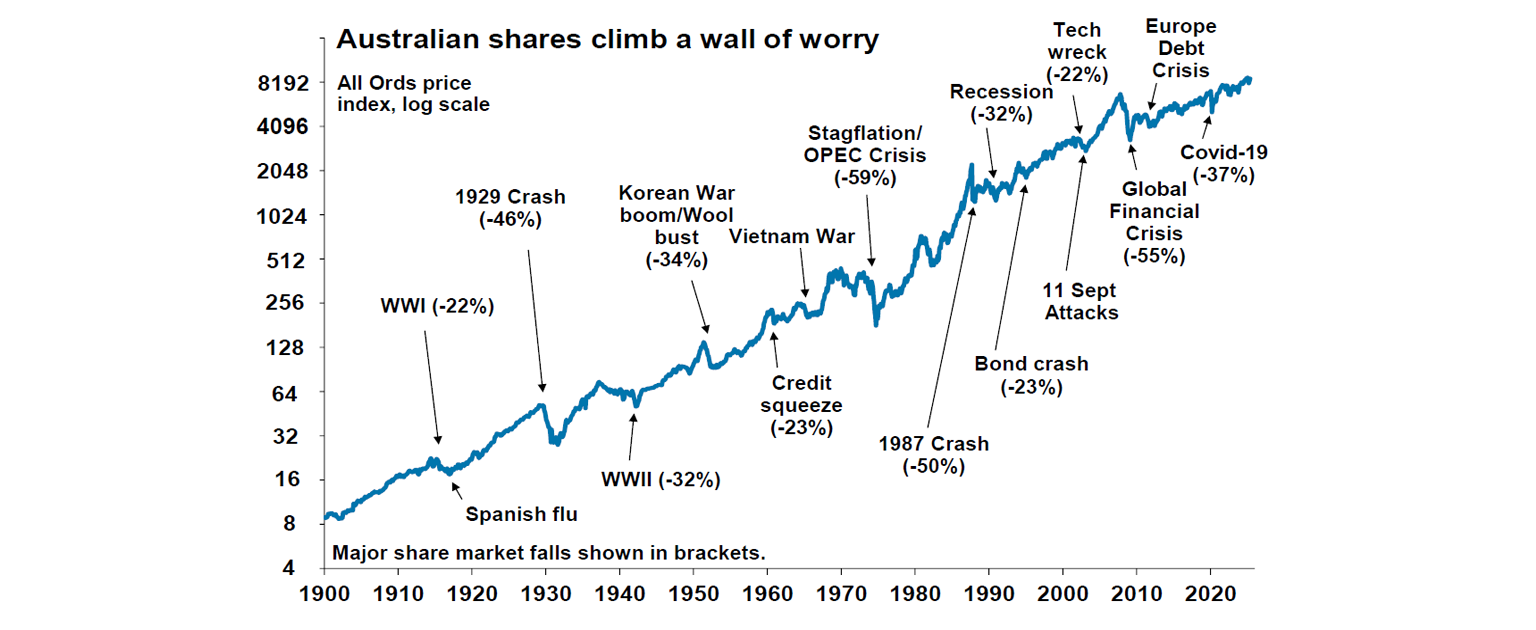4 lessons for building long-term wealth
I recently hit the ripe young age of 40, and I couldn’t be more grateful for the life I get to live.
I have a wonderful family and friends, a modest but charming home, the cutest kitty, a career I love, and the privilege of calling the two best countries on this planet - Australia and Canada - home.
But as you approach 40, you start to notice something interesting. The financial and life trajectories of many people around you couldn’t be more different - mostly because of the decisions they made in their 20s and early 30s.
I know couples earning $150k–$300k with no assets and plenty of debt. Business owners who generated obscene revenues but didn’t pay their dues and are now living under the wrath of the taxman. Executives who lost everything because of one massive, unnecessary mistake.
An American adviser, Nick Maggiulli, recently wrote a book called The Wealth Ladder, where he describes net worth in six levels ranging from less than $10,000 to more than $100 million.
Most people get stuck on Levels 1-3 (<$10,000 to $1 million), and because of bad habits, struggle to push past $1 million. Around 20% even fall backwards due to reckless decisions.

In this wire, I want to share four lessons that can help you move up the Wealth Ladder, and avoid the awful mistakes I’ve seen send people tumbling back down.
Lesson 1 — Live broke now, be rich later
This applies especially to people in their teens and 20s.
It means sucking it up and driving a used car, buying things from Facebook Marketplace and living with your parents for as long as you can tolerate them. Be as frugal as you can and save the rest.
Each dollar you invest early does three to four times the work of a dollar invested later, because the biggest wealth lever you have when you’re young is time - the time to let compounding do its magic.
For example:
- If you put away $1,000 per month in your early 20s - using long-term ASX 200 returns of about 8.5% - you’ll end up with roughly $1 million by your early 40s (Level 3 of the Wealth Ladder).
- But if you start in your 30s, you’ll need to invest three times as much each month to reach the same goal. That’s the price of waiting.
Of course, some of you may say, “A thousand a month is ridiculous!”
And that’s the point - the real lesson is that your 20s should be the decade where you work your butt off to land an upwardly mobile, six-figure career that makes saving meaningful amounts easy. So try and focus on the following:
- Live frugally so you can control lifestyle creep later and funnel as much money as possible into investments.
- Invest in your career by choosing a field you’re genuinely interested in. Work hard, take on extra assignments, and become indispensable to your employer.
- And build social capital! Most people don’t realise that the easiest way to land a high-income job (and sometimes, investment opportunities) is through relationships. There’s plenty of research showing your network is often the difference between staying in a $70,000 role and getting headhunted into a six-figure one.
Lesson 2 — Short-term trading is a waste of time
Oh how I wish I knew this at 20... now that I’m 40, I’ve learned the hard way that it’s all about time in the market, not timing the market.
My best-performing investment is the one I held the longest: my Sydney investment property. I bought it in 2012, held it without overthinking, and over time it has quietly quadrupled, generating around 11% annual net returns even after all expenses.
My share portfolio is a different story. I sabotaged myself by panic-selling during market corrections and trying to be "cute” by picking the top. I probably cut my long-term returns in half on equities and triggered unnecessary capital gains taxes on top.
- I bought CBA at $28 in the 2008 capital raising - sold at $40.
- I bought Shopify at a split-adjusted $5 sold at $7 (it recently hit $150).
- Costco at $300 - sold at $500 (it’s now nearly $1,000).
But this is where the latest - and in my opinion, the greatest - Warren Buffett quote shines.
“My advice: Don’t beat yourself up over past mistakes – learn at least a little from them and move on. It is never too late to improve. Get the right heroes and copy them.”
If you’ve done your homework, you must give your investments time to run. I’m certainly doing that now.
Shane Oliver’s famous “wall of worry” chart shows that markets have climbed through every panic imaginable - World Wars, the Asian Financial Crisis, 9/11, the GFC, the taper tantrum, and even a global pandemic. The long run is astonishingly resilient.

If you can stick to Lessons 1 and 2, there is a very high probability you’ll hit Level 3 - or even the lower end of Level 4 - of the Wealth Ladder sometime in your 30s.
Lesson 3 - Keeping up with the Joneses will destroy you
When people reach a million-dollar net worth - early Level 4 - that’s where I see many people get stuck and sometimes reverse back down.
And I get it. Social media has amplified the pressure to keep up appearances, e-commerce has made it effortless to act on that pressure with a single click, and modern financing has made it frighteningly easy to take on debt for big-ticket items.
I see it constantly: the top-of-the-line caravan, the brand-new truck, the holiday home, the $100,000 boat that gets used maybe one week a year. I’ve been tempted to go down that road myself, but then I remind myself that these are depreciating money pits.
And it doesn’t matter how much you earn. In a consumer-driven economy, your expenses will rise to meet - or exceed - your income if you let them.
To be sure, I’m not against buying nice things. Just don’t do it if it:
- Puts you under financial stress,
- Is driven more by appearances than genuine enjoyment, or
- Adversely alters the financial trajectory of where you want to get to in the Wealth Ladder.
My advice: If you want to enjoy a shiny thing for a short time, then rent it!
Pay $10,000 instead of $100,000 - plus non-stop bills - to rent a luxury boat for a week, hand back the keys, and never think about maintenance again. Rent the holiday home for $5,000 for a month and avoid the stress of managing tenants who live 10 hours away.
The wealthiest people I know drive old cars and still hunt for Happy Hour prices at restaurants. Warren Buffett still drives a 2014 Cadillac with hail damage.
Keeping up with the Joneses is one of the fastest ways to stall financial progress.
Lesson 4 - Don’t blow it
This is the most underappreciated lesson in all of personal finance: once you have wealth, your biggest job is not to squander it.
If you own a home, have a loving family, are blessed with great health, invest regularly, earn a good income, and enjoy a stable life - you’ve already won the lottery. Countless people would trade places with you in a heartbeat.
So the question you should be asking yourself every day is:
How do I not mess this up?
I want you to think about that daily - even be a little paranoid about it - because I’ve seen people drop from Level 4 back to Level 1 on the Wealth Ladder faster and more violently than you’d ever believe.
Here are real examples of people I’ve personally seen lose it all over the past year:
The petty thief - the sales executive who committed fraud. He quietly redirected sales commissions in his company’s system to pocket an extra $100,000. He was caught, fired, sued, and is now unemployable. A six-figure career and a comfortable life destroyed for pocket change given what he was earning.
The tech worker who lost a $300k job - and his Australian Dream - over one bad decision. A permanent resident in the final stages of citizenship, living the dream with an Aussie wife and child. One night, he drove drunk from the bar, hit someone, and had his visa cancelled on character grounds. House gone. Job gone. Freedom gone. Family gone.
The greedy gambler — the German investor who YOLO’d his inheritance. He put a €1 million inheritance into Beyond Meat at $6. In a literal instant, it collapsed to $2. His girlfriend left him; the money had been for their first home. Generational wealth evaporated in just two trading days.
If you blow up your job, your reputation, or your discipline, forget about climbing the Wealth Ladder. There won’t be a portfolio left to fine-tune because you’ve wrecked the engine that powers it.
That’s why true risk mitigation matters infinitely more than nitpicking between an equal-weighted or market-weighted S&P 500 ETF. Honestly… who cares?
INVESTING IS EASY - KEEPING IT IS HARD
And there you have it - four lessons that, I hope, offer something a little different from the usual investing tips. Because at this stage of life, I’ve genuinely come to believe that investing is the easy part.
Whether you own a property or a simple mix of vanilla ETFs, those assets will quietly compound in the background. Your real work is everything else: earning more in your career, living in a way that makes financial sense, resisting lifestyle creep, and avoiding the own goals that can undo years of progress.
If you can master those four behaviours, the Wealth Ladder becomes far less intimidating — and far more achievable.
1 topic

